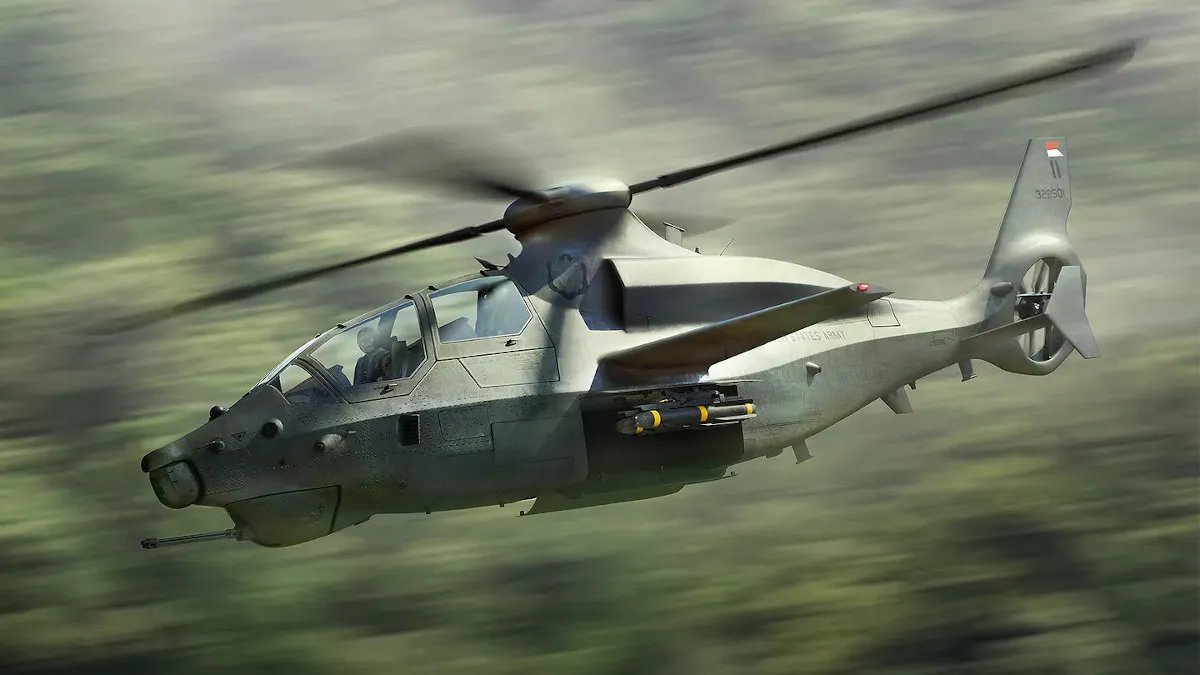The U.S. Army has picked Bell’s Invictus and Sikorsky’s Raider X as the two prototype designs that will face off against each other under its Future Attack Reconnaissance Aircraft program, or FARA. The two helicopters represent the most mature of the proposals that the service received and also stand at opposite ends of the spectrum in terms of relative complexity.
The Army’s Future Vertical Lift Cross-Functional Team, which is managing FARA, announced that it had picked Bell and Sikorsky to proceed to the competitive prototype phase of the program on Mar. 25, 2020. The service is looking to fill a gap in its aviation capabilities left by the earlier retirement of its OH-58D Kiowa Warrior scout helicopters and it could ultimately replace nearly half of its AH-64 Apache attack helicopters with the winning FARA design.
“The selection of the Bell 360 Invictus to continue in the FARA program builds on our decades-long legacy as an innovator in reconnaissance rotorcraft supporting the maneuver force,” Mitch Snyder, President and CEO of Bell, said in a statement. “Our team has applied innovative thinking with tested technology to give the Army a low-risk option to fulfill its requirements on an aggressive schedule.”



“We are honored the Army selected our game changing X2 Technology for Phase 2 of the Future Attack Reconnaissance Aircraft (FARA) Competitive Prototype (CP) program,” Andy Adams, Vice President of Future Vertical Lift at Sikorsky, now part of Lockheed Martin, said in a separate statement. “Through our mature S-97 RAIDER technology demonstrator, we continue to optimize our FARA solution, which will provide the Army with an integrated weapon system that combines speed, range, maneuverability, survivability and operational flexibility. This approach is driving down risk and will result in an aircraft solution that is capable of executing the Army’s joint all-domain operations.”
Bell and Sikorsky beat out other offers from Boeing, a partnership between AVX Aircraft and L3, and from another team that included Karem Aircraft, Northrop Grumman and Raytheon. Airbus Helicopters had considered entering the competition and the Army had disqualified a proposal from MD Helicopters.
Bell’s Invictus is a conventional single-engine helicopter design and was the least complex of the entrants. The company focused heavily on a low-cost, low-risk development strategy that leveraged work it had done on earlier helicopters, particularly on its Model 525 Relentless, including that helicopter’s advanced fly-by-wire system. You can read more about Invictus in this past War Zone piece.

“To ensure the team stays on schedule and on budget, Bell is using a digital design-as-built process. The team is able to connect and collaborate in a real-time digital environment to ensure alignment among all trades to facilitate smoother manufacturing, improve sustainability characteristics, and mitigate schedule risks,” Bell’s statement added. “This process has been used and refined on Bell commercial projects, as well as during the recent U.S. Army Joint Multi-Role Technology Demonstrator program that produced the Bell V-280 Valor.”
Sikorsky’s offering is a compound helicopter design that features a co-axial main rotor and pusher prop in the rear. While it is more complex than Bell’s Invictus, the Raider X design is also fairly mature, being derived from the existing S-97 Raider, examples of which have been flying since 2015. The S-97 was based on technology from the X2 compound helicopter demonstrator, which first flew in 2008.
Sikorsky had actually proposed the S-97 for the Army’s abortive Armed Aerial Scout program, another effort to replace the OH-58D, which the service canceled in 2013. The S-97 and Raider X also share technology with the SB>1 Defiant, which Sikorsky developed with Boeing under the Joint Multi-Role Technology Demonstration (JMR-TD) program. You can read more about the S-97 and Defiant in this past War Zone story.



Earlier this month, the Bell-Boeing team, as well as Sikorsky, received new contracts to continue work on their respective JMR-TD designs as a further lead-in risk-reduction effort to the separate Future Long Range Assault Aircraft (FLRAA) program. The Army is leading the FLRAA effort, which is primarily focused on finding a replacement for the UH-60 Black Hawk.
FARA stands to be particularly lucrative for the company that wins the competition. The Army expects to acquire hundreds of the new helicopters to take the place AH-64 Apaches presently serving in its attack reconnaissance squadrons
At present, the Army hopes to have flying prototypes of both Invictus and Raider X ready to begin testing in the 2022 Fiscal Year. It then hopes to pick a winning design in the 2024 Fiscal Year.
If all goes to plan, the head-to-head competition between Bell and Sikorsky, which starts now, stands to significantly change the composition of the Army’s armed helicopter fleets for years to come.
Contact the author: joe@thedrive.com
